Gallery
-
Duncton walk on 9th July 2025
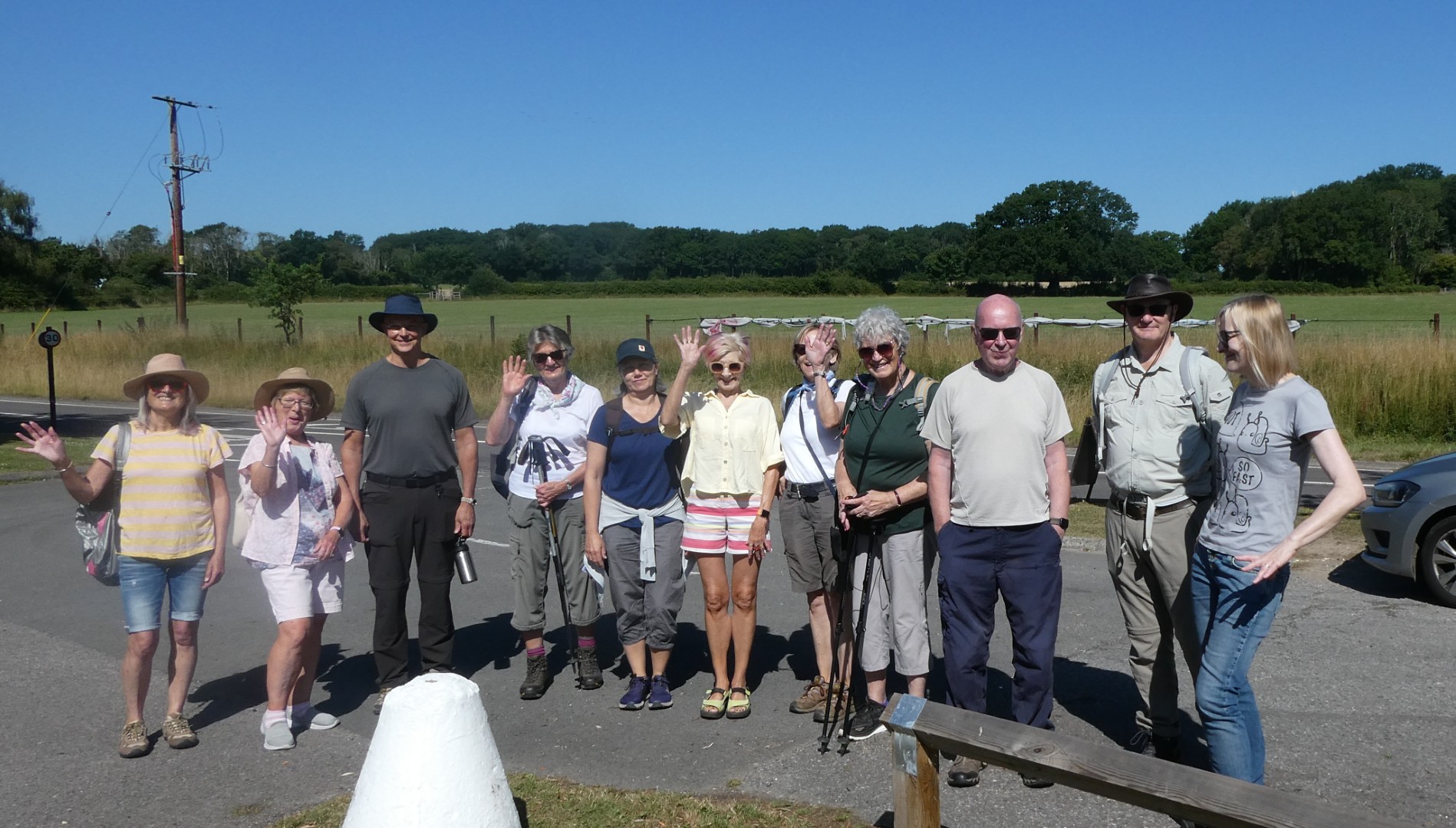
Jay and Lindsay's walk from the Cricketers was a very pleasant stroll of just over 5 miles. The weather was kind to us and the real heat wave did not start until the following day. From the Cricketers we headed east past Ridlington Farm before making a slight mapping error and ended up being very kindly re-directed by the resident of Westerlands Farm. Regrettably their ice cream shop wasn't open as an ice cream would have gone down very well on this warm day. After passing Lower Barn we headed north-west and into Lavington Common where we picked up The Serpent Trail - a 65 mile track that wiggles from Haslemere to Petersfield. Reaching Heath End we had a look at some expensive motors in the showroom before crossing the road and skirting The Rough to get to the Burton Park Estate. Burton Park Estate, which dates from the 13th Century contains a Grade 1 listed mansion with a chequered history. Once home to a Baronet, then an MP, it became an Army Camp, a girls school, a police dog-training centre and is now split into flats. It was at this point we left the Serpent Trail and picked up the West Sussex Literary Trail (55 miles Horsham to Chichester) but fortunately missed the Chichester turning and ended up in the Cricketers for an excellent lunch.
Funtingdon on 2nd July 2025
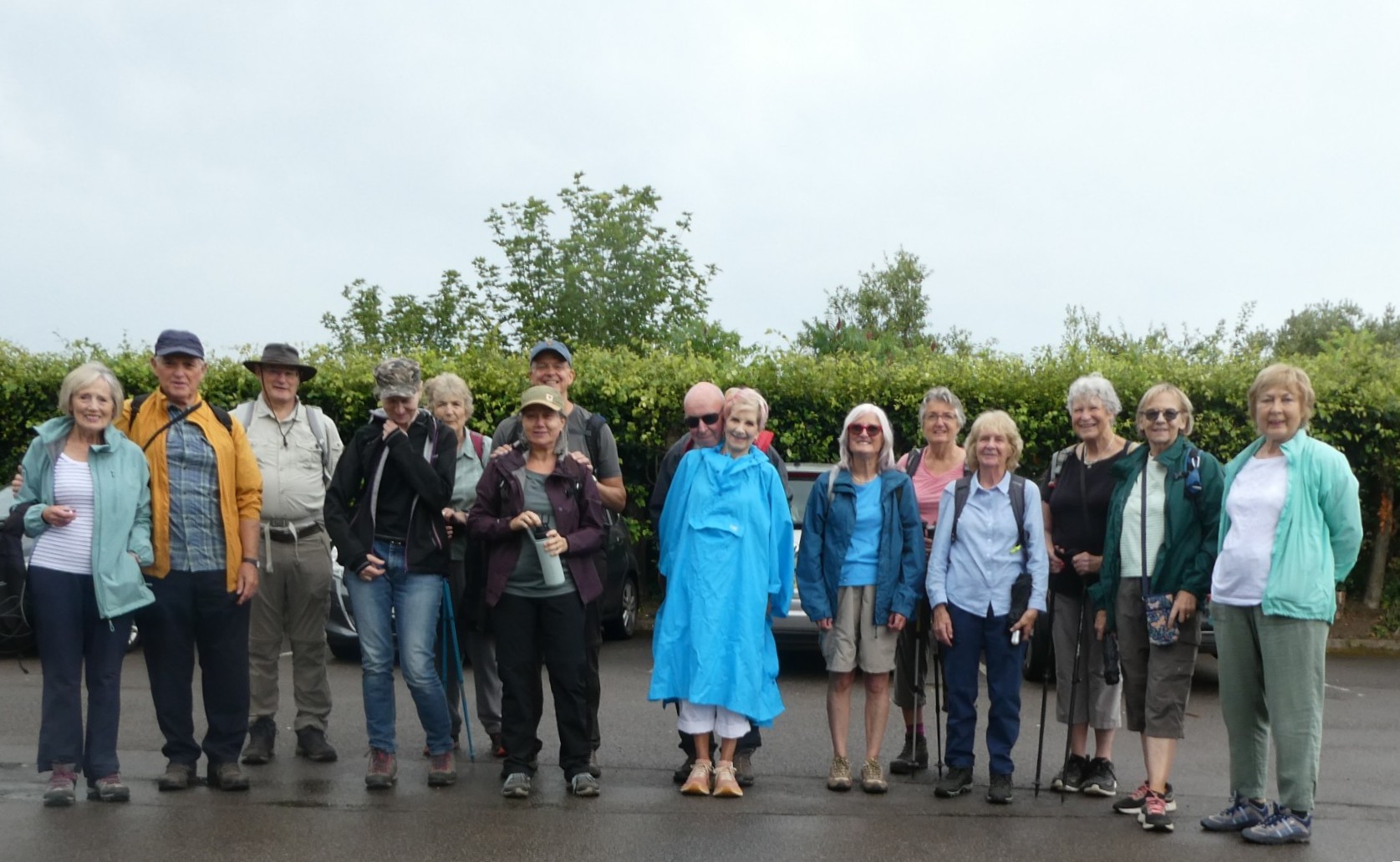
John and Maureen’s 4.5 mile walk with many ‘chocolate box’ cottages and views started from the car park of The Fox and Hounds at Funtington and took us down the High Street to Church Lane past St Mary’s church onto the wheat fields. On reaching West Ashling we stopped at the Mill Pond at the village to watch the swans, ducks, coots with their young families and fish, although the black swan remained hidden. Continuing on Mill Lane we took the footpath heading south bordering on the woods at Southbrook farm and onto Southbrook Road crossing Bosham Stream to veer off onto Ratham Lane past the camping and caravan park. We left the road for the footpath beside Breadbare Copse, with deer grazing in the woods and where we adjourned for our coffee break. The footpath took us by the privately owned Merryfields Plantation to reach East Ashling and a footpath across Dickers Farm’s fields bringing us out onto Southbrook Road which took back to the Mill Pond at West Ashling where the black swan made an appearance. Our return leg took us through the recently combined wheat fields back to Funtington to enjoy our lunch at The Fox and Hounds.
East Dean walk on 25th June 2025
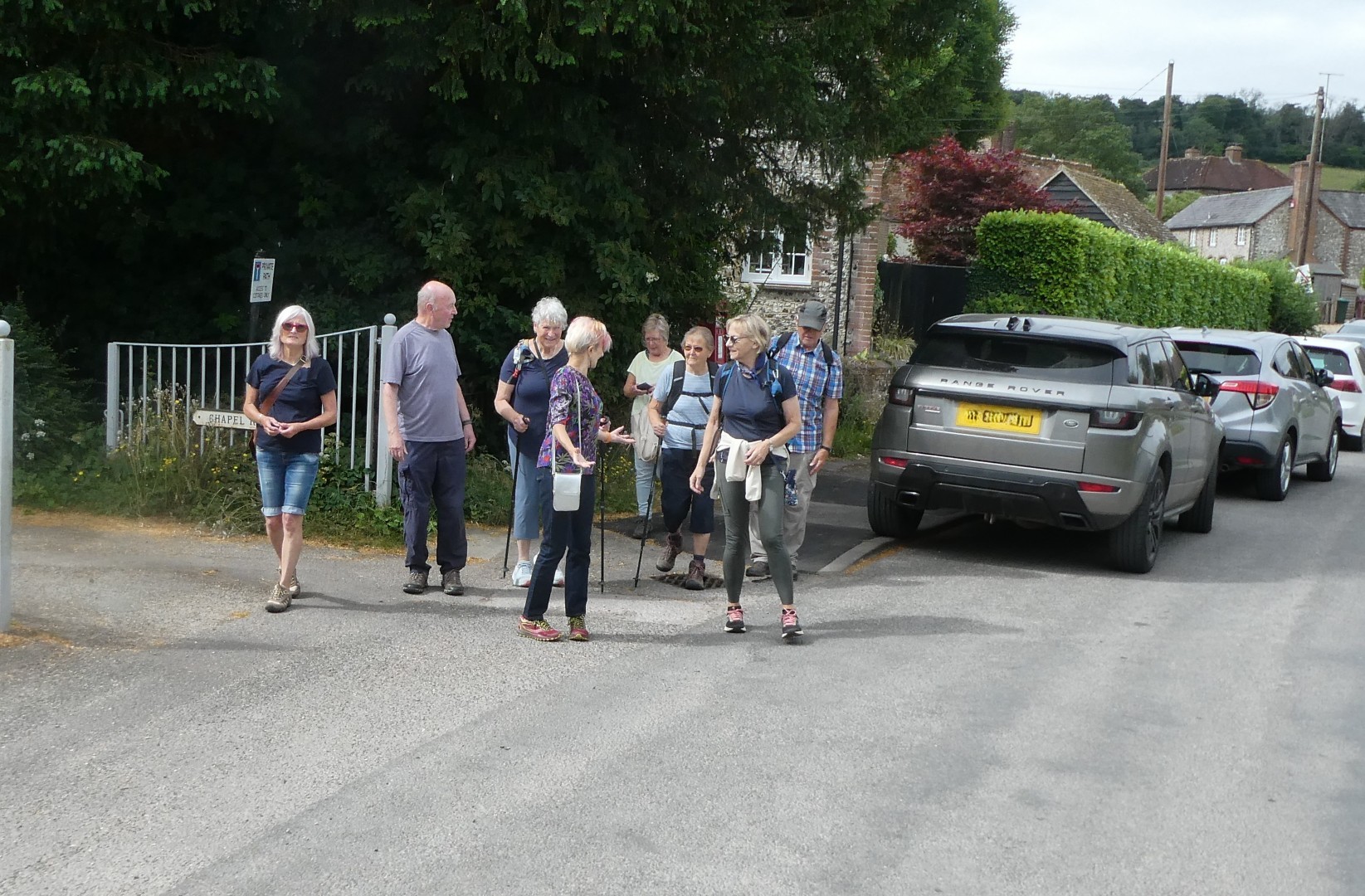
Mark and Jo's walk set off from East Dean village, the last home of playwright Christopher Fry (The Lady's Not For Turning). We first headed East, then turning North to head for the shade of a wood quaintly named Bubholts. It was uphill at first but the gradient gradually reduced as we entered another wood called Chisledown. We then crossed the Selhurstpark Road on its way to Goodwood racecourse and joined the Halnaker Gallop before turning into Open Winkins. Open Winkins is a wood mentioned several times by Eleanor Farjeon in her book "Martin Pippin in the Apple Orchard", written whilst she lived in nearby Amberley. That was some years before she wrote the hymn "Morning has broken", made popular by Cat Stevens. Oddly named woods are an occupational hazard in this area as we were then walking in Ladys Winkins, which was our furthest point south for the day. A quick walk led to a suitable coffee stop next to Hat Hill before we headed towards the edge of the Goodwood Racecourse. Once we had crossed the road it was mostly downhill through Park Hill and Eastdean Park. For some reason flowers seemed to be much more in evidence after our break and the barley in Manor Farm had a few very unfamiliar invasive growths. Soon we were back in East Dean where we all enjoyed a great lunch in the Star and Garter.
Itchenor walk on 18th June 2025
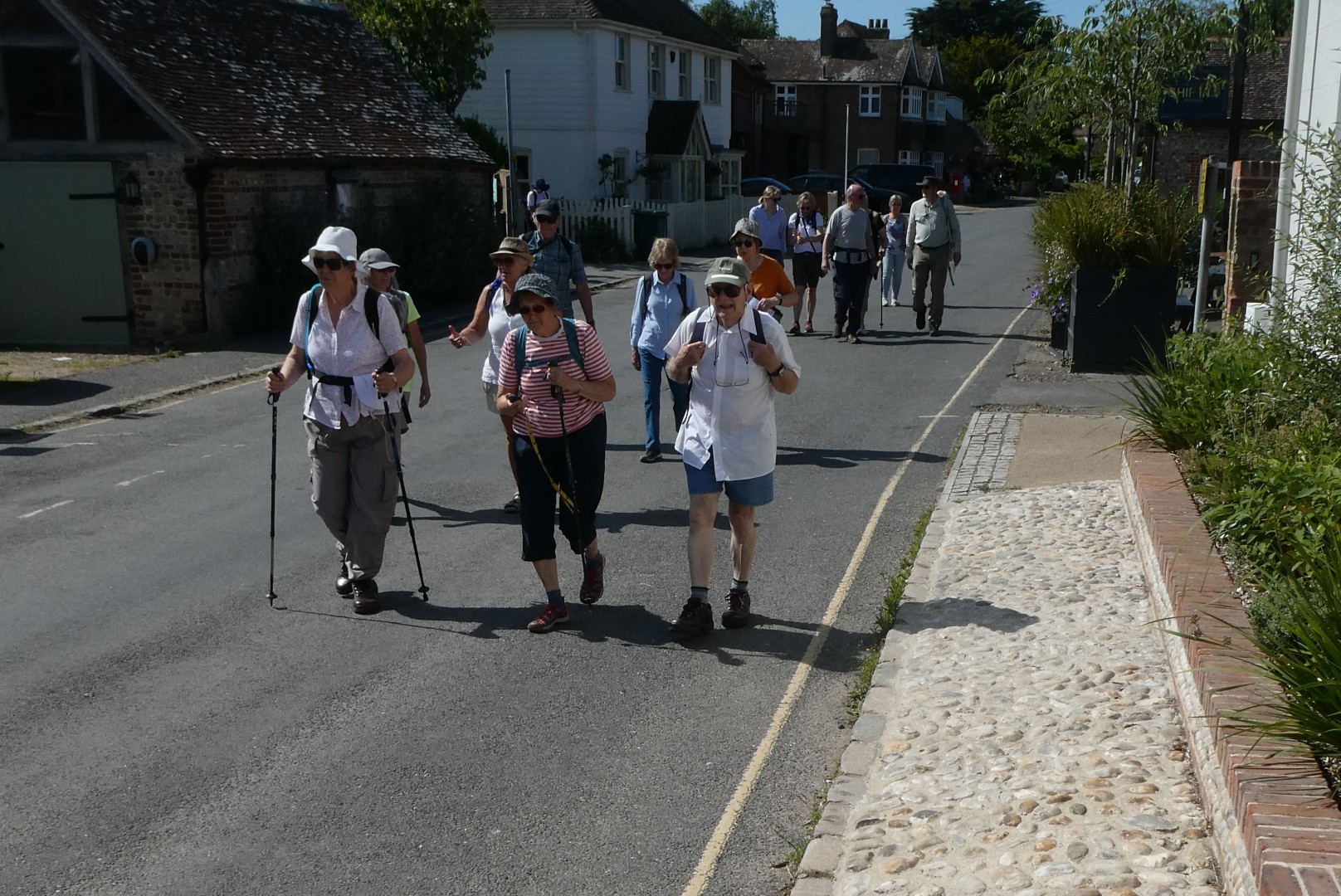
We gathered in the sunshine and increasing heat at The Ship Inn at Itchenor where Isabel talked us through our options for shortening the walk if the heat became too much. Having worked out the points where we could cut the walk short we set off down to The Lipchis Way on the south bank of the Chichester Channel. The tide was out leaving some yachts and boats moored high and dry but there were still some out on the water for us to admire as walked down towards Horse Pond. We came across some impromptu swings hanging from trees on the bank which were too hard to resist. At Horse Pond we turned inland back towards West Itchenor, stopping off at St Nicholas’ church where the shade and benches were perfect for our coffee stop accompanied by organ and choir practice. A couple of our walkers peeled off to shorten their walk, while the rest of us carried on until we reached the path across the fields of Oldhouse Farm where we decided to brave the direct sun and shorten our walk too. As we neared Westlands we took the west bound Lipchis Way through Westlands Copse and took our time looking at the real estate before returning to the Channel bank, past piers and then back to The Ship Inn for lunch.
Rogate walk on 11th June 2025
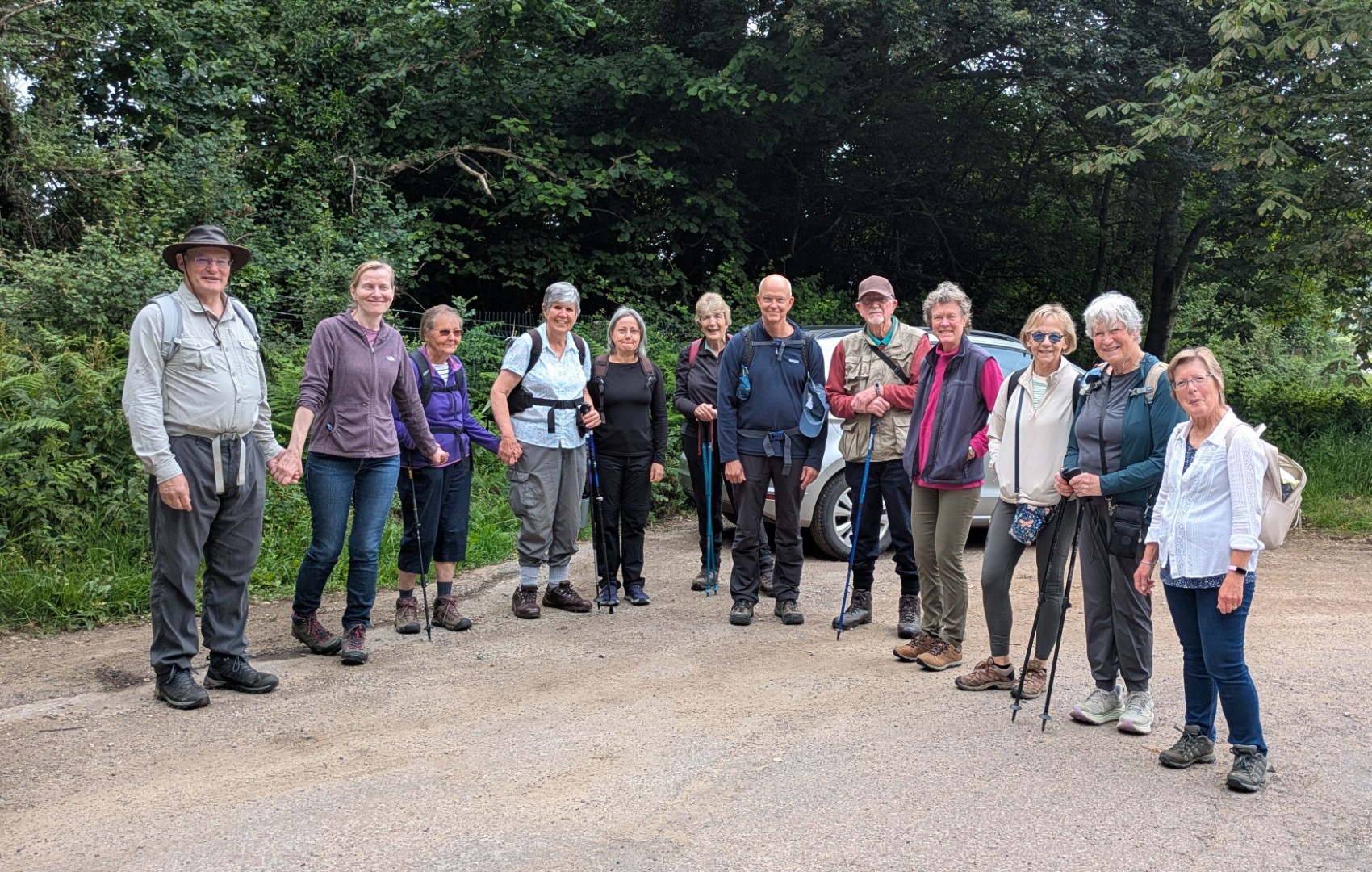
We started on Tim and Jane's walk from the layby on the A272 at Terwick. We welcomed Jo, a guest walker from New Zealand - who must have started out MUCH earlier than the rest of us! Heading north up a gulley between fields we eventually reached Terwick Common where we crossed the road to continue our northwards route. Eventually reaching Dangstein Road, we turned west and took the road past the Fyning Hill Estate, before eventually turning down into Fyning Common. After walking through the trees, our route eventually took us through fields of intensively grown sweetcorn. We spent some time wondering how they removed the miles of polythene no longer required by the plants, but failed to arrive at any conclusion. The nearby Rogate Village Recreation area provided an excellent spot to rest our legs and have a drink and also to celebrate a birthday. Once revived we walked into Rogate and took a path through Parsonage Estate and then through fields to reach a bridge over the somewhat murky River Rother. Some more lane walking until we reached Habin Bridge, thought to have been built in the 15th or 16th Century by monks from the nearby Durford Abbey, perhaps a hundred years before any European found New Zealand. We then walked alongside the Rother before making for the church of St Peter in Terwick.
There we found the Lupin Field, click here :- LUPINS.
The weather this year has been not particularly good for lupins but there was still a good display. New plants had been protected from the slugs by sheeps wool which is an interesting alternative to all the other remedies that never seem to work very well. Crossing the road we found our cars and heading to The Elsted Inn, where we all enjoyed an excellent lunch, promptly served!
Recent galleries
- Duncton walk on 9th July 2025
- Funtingdon on 2nd July 2025
- East Dean walk on 25th June 2025
- Itchenor walk on 18th June 2025
- Rogate walk on 11th June 2025
History
2025
2024
- December (3)
- November (5)
- October (4)
- September (4)
- August (4)
- July (4)
- June (5)
- May (5)
- April (5)
- March (5)
- February (5)
- January (4)
2023
- December (3)
- November (6)
- October (5)
- September (5)
- August (3)
- July (4)
- June (6)
- May (5)
- April (4)
- March (5)
- February (4)
- January (4)
2022
- December (4)
- November (5)
- October (5)
- September (3)
- August (4)
- July (6)
- June (11)
- May (4)
- April (5)
- March (4)
- February (5)
- January (4)
2021
2020
- December (4)
- November (1)
- October (5)
- September (4)
- August (3)
- July (3)
- March (2)
- February (5)
- January (3)
2019
- December (2)
- November (5)
- October (4)
- September (3)
- August (4)
- July (4)
- June (11)
- May (5)
- April (4)
- March (3)
- February (5)
- January (5)
2018
- December (2)
- November (4)
- October (4)
- September (5)
- August (4)
- July (3)
- June (5)
- May (8)
- April (4)
- March (4)
- February (5)
- January (3)
2017
- December (3)
- November (5)
- October (3)
- September (4)
- August (4)
- July (4)
- June (11)
- May (4)
- April (4)
- March (3)
- February (4)
- January (5)
2016
- December (3)
- November (4)
- October (5)
- September (4)
- August (3)
- July (6)
- June (11)
- May (4)
- April (5)
- March (3)
- February (10)
- January (2)
2015
2014
- June (2)
1997
- February (1)